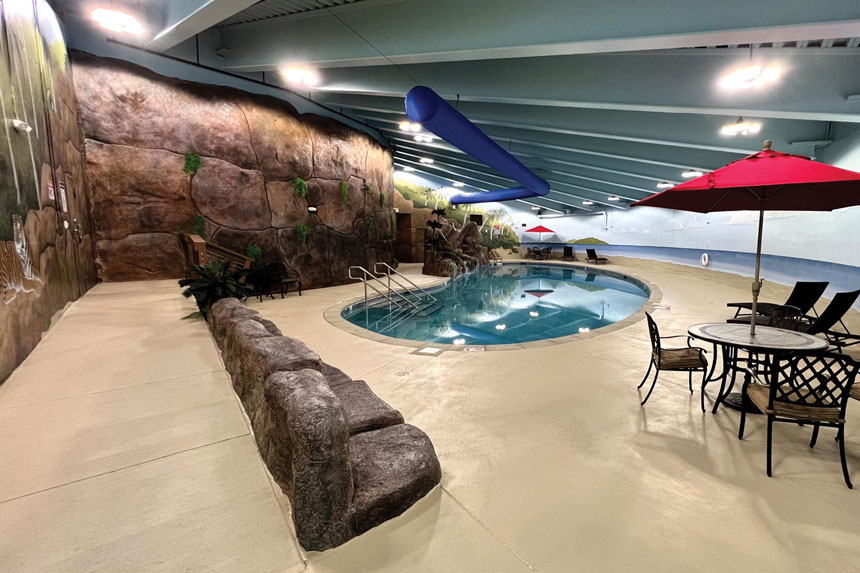As 2023 limps to a close, it’s apparent that many of my fellow Americans live in a state of near-constant wariness. Things could go horribly wrong at any moment. Another pandemic, a meteor strike, a nuclear blast. Even those smoky, lung-clogging wildfires over our northern border are concerning. “Pick your poison,” one survivalist recently warned me, pointing to multiple apocalyptic scenarios. Truth is, it’s not irrational to contemplate these what-ifs — and, crucially, where we’d race to safety if the worst came to pass.
We need not all live in mortal fear, however. We should not. I happen to be someone who has deliberately locked onto a sunny worldview. That makes it easier to get out of bed every morning. And yet I understand that totally ignoring the big, existential threats is not realistic.
This widespread sense of looming catastrophe has, unsurprisingly, triggered a surge in the sale of residential bunkers. Survival Life, an online site, reports that “companies that manufacture [bunkers] can barely keep up with demand.” We live in an era when the notion of temporarily relocating underground to save ourselves (and maybe preserve our species) is not aberrant.
Sadly, bunkers are not a new thing here, nor have they gone unnoticed in our pop culture. People gathered tightly together in a dystopian hellscape is too rich a storyline for artists not to mine. Their tales have long found a way into our books, songs, and films. For example, the 1999 movie Blast from the Past, starring Brendan Fraser, focused on someone who actually spends his entire life in a California fallout shelter. Imagine. Curiously, it was the rock band R.E.M. that, counterintuitively, found a hint of merriment in the topic. Lyrics to their 1986 song “Underneath the Bunker” are celebratory: “I have water, I have rum. Wait for the dawn and dawn shall come.” Irreverent, sure, but vaguely optimistic.
Today, half a dozen American outfits specialize in manufacturing the kind of shelters that would afford the protection you’d need in the event of a mass-casualty event. What they’ll tell you is that any shelter worth purchasing — pre-fab or custom, concrete or steel — should include systems that filter out the effects of a nuclear, biological, or chemical attack, and operate flawlessly for several months. Expect to pay about $40,000, minimum, for a modest backyard shelter that meets those requirements.
For those with both the taste and the means for the finer things in (subterranean) life, the man to talk to is Larry Hall, a developer who’s been building luxury shelters inside former underground missile silos in Kansas. His Survival Condo communities include a pool, a spa, a gym, and a movie theater. They’re designed to be self-sustainable for five years. HOA fees run $5,000-plus a month for premium units. Interestingly, owners often stay in their tricked-out condos for weeks at a time throughout the year, according to Hall. They aren’t sitting around waiting for an excuse to escape a threat.
“These are the kinds of people you’d love to have as your neighbors,” Hall told me by phone. Not long ago, a Chicago family used their Survival Condo for traditional Thanksgiving festivities. The common areas were, of course, decorated for the year-end holidays: Christmas trees, menorahs, and so on. “They were thrilled,” Hall boasted. “They had so much fun, they decided to buy another unit.”
So, while some bunkers are bespoke and some plain, I ask: Would it be too much to hope for a 2024 in which no one actually needs to step inside one?
In the September/October issue, Cable Neuhaus wrote about what your desk says about you.
This article is featured in the November/December 2023 issue of The Saturday Evening Post. Subscribe to the magazine for more art, inspiring stories, fiction, humor, and features from our archives.
Become a Saturday Evening Post member and enjoy unlimited access. Subscribe now



